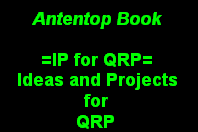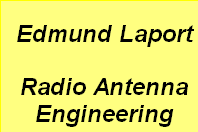

Antentop is FREE e-magazine devoted to Antennas and Amateur Radio an
Special page devoted to
RF Generator for HF Bands 1.8- 30- MHz

Custom Search
|
ANTENTOP-
01- 2020, # 024 |
RF Generator for HF Bands 1.8- 30- MHz |
|||
|
|
|
|||
|
The master oscillator consisting
of Q1 and Q2 is a typical, push-pull RF generator. The frequency
range depends on coil L1 and variable capacitor C1. S1 switches
the coils to change bands. For simplicity, the coil connection
is not shown for all ranges in use. The generator has three switching
coils that provides operation ranges 1.4 to 3.2 MHz, 3.2 to 8.0
MHz, and 8.0 to 30 MHz. Dial of the
variable capacitor C1 was calibrate with frequency meter at each
of the operation range. In the lower operation range
1.4 to 3.2 MHz, the output power measured into a 50 ohm dummy
load is no less than 400 mW. Output
power in the middle range 3.2 to 8.0 MHz,
is no less than 300 mW. In the high range 8.0 to 30 MHz, output power is 200
mW on 8 MHz and 150 mW on 30 MHz. When generator
was connected to an RF- Bridge that is loaded by an antenna, the
output frequency of this RF-generator varies no more than 5 kHz
in the first range, 15 kHz in the second range and no more than
30 kHz in the highest range of operation. The master oscillator is
fed from the 5 V regulator chip U1, also the base network of Q3
feeds from the 5 V regulator. This stabilizes the oscillator against
supply voltage variations between 6 V and a maximum of 12 V. Voltage
regulator IC U1 is not mounted on a heat sink. If the Q3 is fed
from the regulated 5V supply, the frequency stability will be
increased even more, but the output power will be lowered at least
in half. The regulator chip will have to be mounted on a heat
sink if this is done. Transistor Q3 is installed on a heat sink
with sizes 40x40x4 mm. Adjustment of the RF Generator
is not complicated. When it is soldered from right parts it should
be work straight away. However, for best operation Q1 and Q2 must
be identical -- a matched pair. It should be checked with oscilloscope
or RF voltmeter. RF voltage on the collectors of the transistors
should be almost identical. If there is a difference of 30 percent
or more, it would be necessary to replace one or the other of
the transistors. The resistors R1, R2, R5 and R7 assure a sine
wave RF output on all of the operating ranges. R8 installed the
bias of the Q3. Without signal on the base
Q3 (inductors are not connected to Q1 and Q2) the collector current
of Q3 should be in the range of 100 to 150-mA. The value of R6
should be picked for each range. Increasing the resistance of
R6 increases the frequency stability, but it also reduces the
output power of the generator. Table 1 shows data for inductors of the RF generator. Figure 2 shows design of the inductors.
Set up of the frequency
ranges of the master oscillator done by squeezing or stretching
turns of the coil L1. The coil has Center Tap and it should be
wound with best possible symmetry. |
Figure 3 shows design of the RF transformer T1. Transformer T1 is wound on a
ferrite ring with a permeability of 600 and OD of 10 mm. The winding
consists of 10 turns of 0.3-mm wire (28 AWG). -
Capacitors- C2,
C5 - 91 pF C3,
C4, C6, C8 - 0.1 UF C7,
C9, C10, C12 - 0.15 UF C11
- 100 UF/16V R2,
R5: 10 Ohm, 0.25W R3,
R4: 30k Ohm, 0.25W R6:
See Table 1 R8:
360* Ohm, 0.5 W, must be selected, see text R9:
470 Ohm, 0.25 W R10:
2 Ohm, 0.5 W J2:
BNC Female RF Connector Q3:
Any Middle Power RF Transistor, 5W/300 MHz |
|||
|
|
||||
|
Page- 92 |
||||
 |
 |
|
 |
|
|
|||
Just for Fun:

Powered byIP2Location.com
Thanks for your time!
Last Updated:
January 30, 2021 21:29





